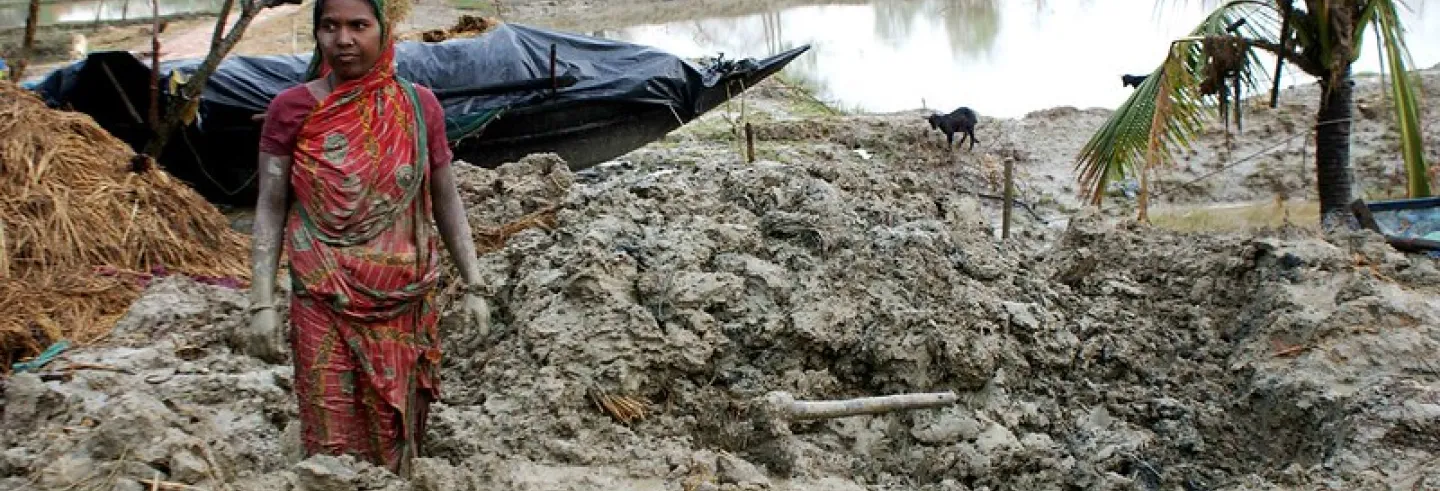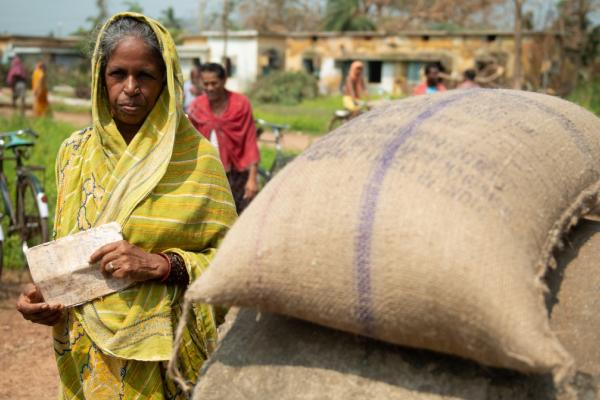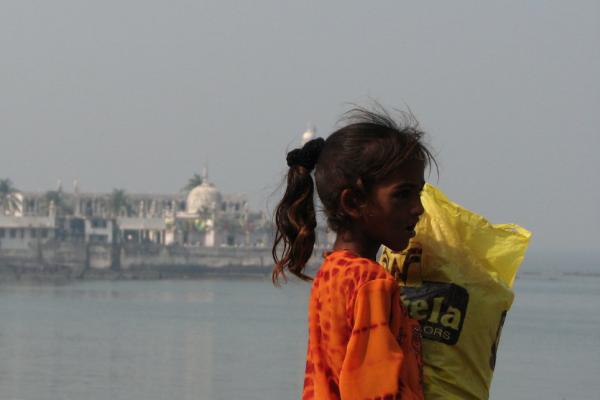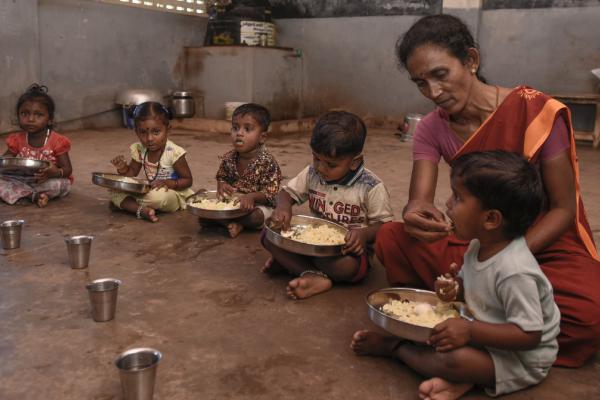Among the most extraordinary global initiatives of the past few decades have been the iconic climate change assessment reports by the United Nation’s Intergovernmental Panel on Climate Change (IPCC). Hundreds of scientists from around the world contribute their collective expertise to analyse and assess the cumulative mass of scientific literature on every aspect of the earth’s changing climate. The purpose of these reports is to distil the findings of thousands of scientific studies published each year and weave together a consistent global narrative based on several criteria such as the robustness of the analytical techniques used, the consistency between the reported findings, and their limitations. The authoritative reports that have emerged from these efforts have shaped the global narrative on climate change and are used by journalists, policymakers, and fellow scientists.
Need for regional climate change assessments
While climate change is global, its manifestations vary widely across the planet. For instance, sea level rise may be the issue of greatest concern to small island nations, but for a land-locked tropical country, intensifying heat waves, droughts, and floods may be of more concern The IPCC reports are mandated to capture a global snapshot of climate change. The magnitude of this undertaking makes it logistically impossible for the IPCC to furnish detailed assessments of regional-scale changes. They are, however, of utmost importance for informed policy making, which flags the necessity of having such regional assessments.
India released its first comprehensive climate change assessment report in June 2020, titled Assessment of Climate Change over the Indian Region (free to download),covering every aspect of past and projected changes in climate pertaining to the subcontinent and the oceans around it (Krishnan et al. 2020). In this article we look into the major findings of this report to understand them on the canvas of the global-scale changes diagnosed by the IPCC reports.
The intent of the climate change assessment report is to serve as a basis for subsequent climate impact and risk assessments.
The report focuses on two standardised scenarios of changes in anthropogenic emissions in the future that are termed the Representative Concentration Pathways, RCP4.5 and RCP8.5. 1 Quote from the report: “The scenarios used by models participating in the Coupled Model Intercomparison Project Phase 5 (CMIP5) that contributed to the IPCC AR5 were termed the Representative Concentration Pathways (RCPs) and covered the period from 2006 to 2100. The four RCPs that were defined were the RCP2.6, representing a low emissions pathway resulting in radiative forcing (RF) of roughly 2.6 W/m2 at the end of the twenty-first century, RCP4.5 and RCP6 representing intermediate emission pathways resulting in an RF of 4.5 W/m2 and 6 W/m2, respectively and the high emissions scenario RCP8.5 representing a pathway with continued growth in GHG emissions leading to an RF of roughly 8.5 Wm−2 at the end of the twenty-first century.” These represent intermediate and high carbon emission trajectories, respectively. The intent of the report is to serve as a basis for subsequent climate impact and risk assessments. An important development in this regard is the recent Climate Vulnerability Assessment for Adaptation Planning in India Using a Common Framework released by the Department of Science and Technology in April 2021.
Findings on Climate Change
For the purposes of this article, we choose to focus on the assessment in the Assessment of Climate Change report of the change projected for the mid-century (technically, the mean over 2040–2069) under the RCP4.5 scenario. (The RCP8.5 trajectory is an extreme emissions scenario, which we hope to avoid through even partial adherence to the Paris climate accords. Also, changes by the end of the century may appear too distant for immediate relevance.)
1. Rainfall
Being an agrarian economy in substantial part, changes in the magnitude and patterns of monsoon rainfall are of great consequence to India. Unfortunately, there has been persistent uncertainty around how the South Asian monsoon may change in the future. The South Asian monsoon system is one of the most complex physical phenomena known to meteorology, involving strong interactions between deep convection over the subcontinent and large cross-equatorial monsoon wind flows. The magnitude of yearly summer rainfall is strongly influenced by periodic and episodic events such as surface temperature patterns of the Indian and Pacific oceans and volcanic eruptions, among others.
Associated with a decline in monsoon rainfall, the last few decades have seen an increased propensity for severe droughts.
The summer monsoon rainfall over India is assessed to have declined by about 6% since the middle of the 20th century. Associated with this, the last few decades have seen an increased propensity for droughts, with both their frequency and areal extent having significantly increased. In particular, parts of central India, including the Indo-Gangetic plain, have witnessed an increase in the severity of droughts. On the other hand, increasing short-term heavy rainfall events and flooding during the monsoon have exacted an increasingly heavy toll in terms of lives lost and economic damage. Over the entire monsoon season, these changes have been experienced as long periods of dry days and low rainfall, intermittent with short spells of heavy rainfall events.
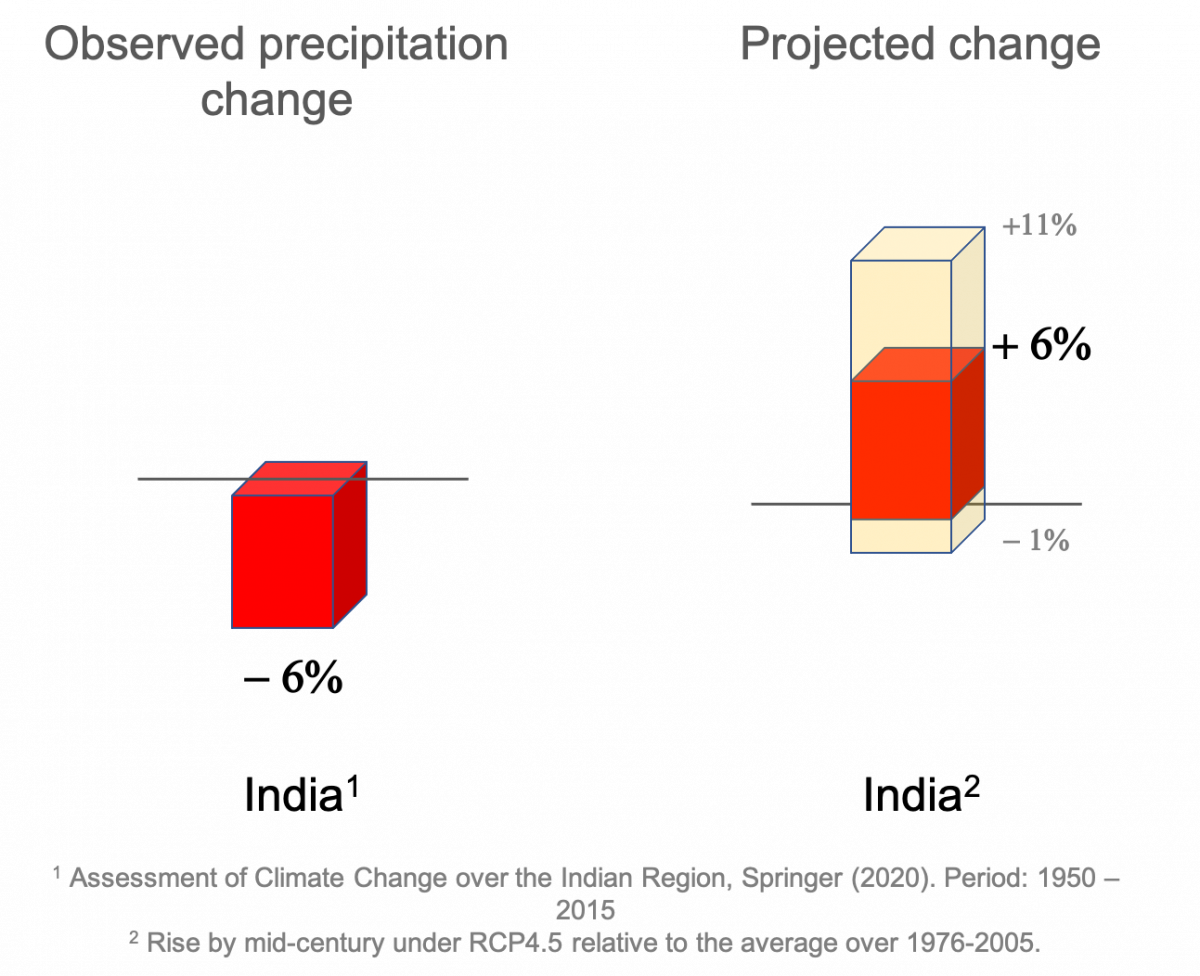
What underpins these changes in India’s rainfall? Has human intervention played a role? The answers to these questions are very important for a prognosis of the future as the planet continues to warm.
Indeed, while the monsoon exhibits large 'natural variability,' there has been a growing consensus that anthropogenic changes have contributed to the observed decline, with greenhouse gas (GHG) emissions and aerosol pollution once again implicated (Krishnan et al. 2016).
The effect of aerosols on climate is as complex as it is insidious. There is increasing scientific convergence around the idea that changes in precipitation are strongly affected by aerosols (Dhara 2020). In the Indian context, there is increasing evidence that the temperature masking effect of aerosols over land (see the section on Temperature below) and the exceptionally rapid warming of the tropical Indian Ocean (due to GHG emissions) have, in combination, reduced the strength of monsoon circulation. The result has been a fall in the influx of moisture into the subcontinent, thus leading to a decline in monsoon rainfall (Roxy et al. 2015).
This understanding holds important lessons for our prognosis. For one thing, we may anticipate that a reduction in aerosol pollution will not only benefit human health but also lead to a partial revival of the South Asian monsoon. Moreover, the increasing 'moisture capacity' of the atmosphere that will come with continued warming through to mid-century under RCP4.5 will favour an increase in monsoon precipitation.
Yet another finding with almost universal agreement among models is an increase in year-to-year variability in the quantum of monsoon rainfall and an increase in the occurrence of extreme rainfall events…
Yet, while these major processes are understood to influence the monsoon, questions remain on quantifying their effects in the future. As the climate assessment report points out, a large majority of models project that the monsoon will strengthen in the future as GHGs increase and aerosols decrease. Yet another finding with almost universal agreement among models is an increase in year-to-year variability in the quantum of monsoon rainfall and an increase in the occurrence of extreme rainfall events separated by lengthening dry spells with warming.
Thus, the lesson is that immediate risk mitigation measures are warranted to secure India’s food, water, health, and infrastructural security from future changes in the monsoon that will exacerbate flood and drought risk.
2. Temperature
The IPCC’s special report on the impacts of global warming of 1.5° C above pre-industrial levels and related global greenhouse gas emission pathways (SR1.5) reported that the earth’s surface has warmed on average by about 1° C over “pre-industrial times” (usually understood as pre-1850) (Allen et al. 2018). By comparison, the Indian assessment report has assessed that the average temperature over India has risen by 0.7° C since 1901 (which can be roughly interpreted as pre-industrial times).
Averages, however, often conceal as much as they reveal. The 1° C global temperature rise is unevenly distributed around the world with temperatures over land having risen much faster than over oceans. Global land regions on average have already seen a nearly 1.5 C rise.

Why is the temperature rise over India only half the global mean?
While this is a complex question, there are some important physical processes that are likely to have contributed to the low rise over India. One is that hot tropical regions tend to warm slower than the colder extra-tropics — a consequence of a fundamental climate stabilizing process called the Planck feedback, which is stronger at a higher temperature. Another, of anthropogenic origin, is the heavy aerosol (read, air pollution) loading over the northern hemisphere, and specifically over the subcontinent, that blocks a part of solar radiation from reaching the surface and effectively acts as a local antipyretic, muting temperature rise until it is flushed from the atmosphere.
Studies suggest that aerosols may be now masking a 0.5° C to 1° C rise in India’s land temperature (Dileepkumar et al. 2018). This is, however, no consolation given the serious effects of pollution on health. In addition, the masking effect wears out rapidly with a decline in pollution.
The report projects an increase in the frequency of heat waves by mid-century and predicts they will be 20% longer in duration on average.
As for projections, the report assesses that the mid-century temperature rise will exceed the average temperature during the 1976–2005 baseline period by about 1.9° C. Since the 1976–2005 period was already warmer than pre-industrial times, we may consider that the projected rise by mid-century since pre-industrial times has been up to 2.3° C.
Of greater consequence to society than changes in the mean are changes in extremes — heat waves and extreme temperatures. The report projects an increase in the frequency of heat waves by mid-century by a factor of 2.5 over the recent past (1976–2005 average) and predicts they will be 20% longer in duration on average under the RCP4.5 intermediate emissions scenario.
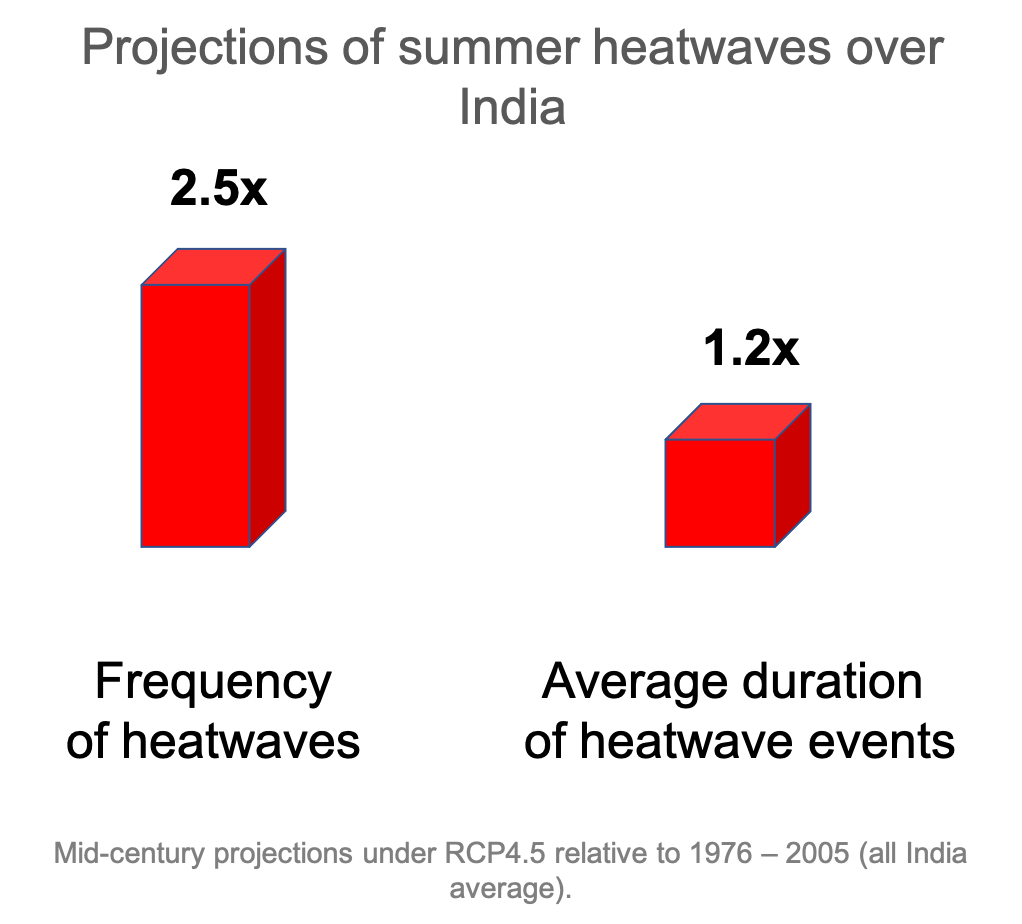
The impacts of heat waves in India are exacerbated by high summer baseline temperatures, and the humidity of the coastal areas and the Indo-Gangetic plains. The heat waves of 2015 and 2016 across the subcontinent are now understood to have been made particularly lethal because a spike in temperature was compounded by a simultaneous spike in humidity (Jan van Oldenborgh at al. 2018).
3. Indian Ocean warming
The centrality of the Indian Ocean to the dynamics and variability of the South Asian monsoon is manifold. Summer time temperatures of the southern and tropical Indian Ocean relative to the subcontinental land region, the difference in temperatures between the western and eastern Indian Ocean (the Indian Ocean Dipole) during the monsoon season, and the propagating patterns of temperature from the northern to southern Indian Ocean (the Madden Julian Oscillation) strongly influence the strength and patterns of the monsoon.
This context lends great significance to an extraordinarily rapid rise in sea surface temperature that has occurred in the tropical Indian Ocean over the past seven decades—nearly 1° C, substantially higher than the average rise of 0.7° C over the global ocean. Note that this rise in the ocean’s surface temperature has even exceeded the temperature rise over the Indian land region (0.7° C)—a presumed contributing factor to the reduced strength of the monsoon since the 1950s (Roxy at al. 2015). In particular, it is the western Indian Ocean and the Arabian Sea that have seen the most rapid warming in the Indian Ocean basin and more than 90% of this has been attributed to anthropogenic emissions.
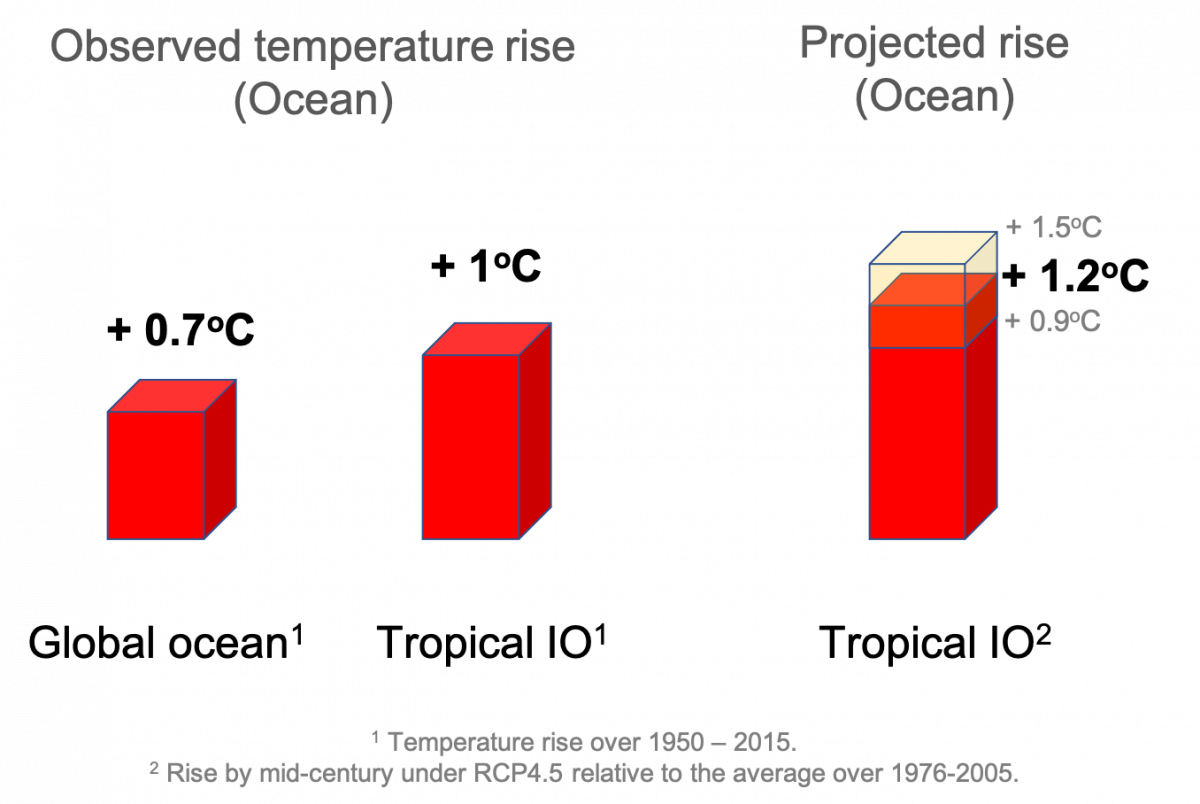
Climate models project that the tropical Indian Ocean basin will experience a temperature rise of 1.2° C by mid-century relative to the recent past (average over 1976–2005) under RCP4.5, with a greater rate of warming in the Arabian Sea relative to the Bay of Bengal in line with observed trends.
4. Sea level rise
Global warming has caused glaciers to melt and ocean waters to expand worldwide. These have together contributed to a global rise in sea levels, posing risks to coastal habitation and infrastructure. Aside from many Indian megacities — Mumbai, Chennai, Kolkata — being coastal and low lying, vital infrastructure such as power plants are often sited along the coast since they need vast quantities of water for cooling.
The average rate of sea level rise in recent decades, both globally and along the Indian coastline, has been about 3 mm a year. This might appear as a very small change. Over a decade, however, this amounts to a rise of 3 cm. The gently sloping area adjoining the coast, the Continental Shelf, has an average downward slope of only about 0.1°. Therefore, a 3 cm sea level rise would cause the sea to intrude further inland by a disproportionate 17 m (65 feet; see schematic below).
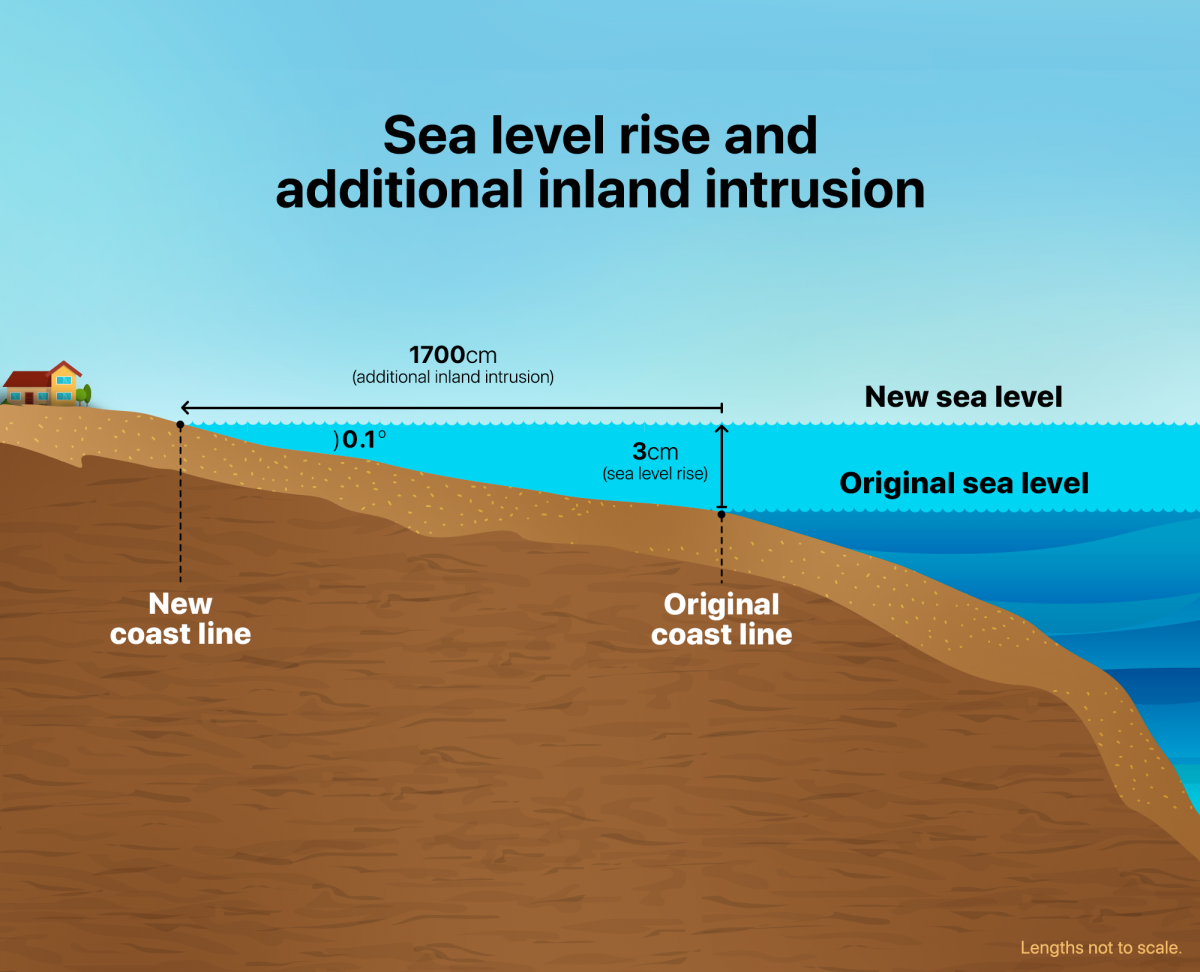
In response to rapid glacier melting and ocean warming, the rate of sea level rise is projected to increase to 5 cm per decade, amounting to half a metre in a century. The impact of this will be huge — a large part of the coastal regions of India are already close to the sea level or below it.
Rates of sea level rise differ substantially across the planet. The US East Coast has seen sea levels rising two or three times faster than average, while Scandinavia has seen sea levels falling. Parts of the Sundarbans in India and Bangladesh are swamped by a sea level rise of up to four times the global average. These differences arise for many complex reasons, including not just varying rates of climate change but also various geophysical processes and modes of “development” pursued across the world.
Greenland and Antarctica are now losing ice because of global warming, and such climate-induced geological changes are expected to increasingly play out in the future.
An example of a climate-induced regional variation is the relatively rapid rate of temperature rise in the tropical Indian Ocean, which makes water expand more rapidly, thereby accelerating a rise in the sea level. Owing to these multiple causative factors, the rate of sea level rise is also substantially different within the Indian Ocean. For example, the current rate of sea level rise is about 3 mm annually along the west coast for regions such as Mumbai, while it is 5 mm annually along the northeast coast for regions such as Kolkata.
On the other hand, the post-glacial rebound is a geological process where regions of the planet that were loaded down by the weight of enormous ice sheets during the last ice age (more than 10,000 years ago) are still rebounding because the melt-off is reducing the weight on them. This effectively causes sea levels to fall along those coastlines. As Greenland and Antarctica are now losing vast quantities of ice because of global warming, such climate-induced-geological changes are expected to increasingly play out in the future.
Yet another fascinating effect is that of gravity. The kilometres-thick ice sheets of Greenland and Antarctica are an enormous mass that exert a gravitational pull on the waters surrounding them and cause them to pile up along their shores. As these ice sheets lose mass by melting, their gravitational pull weakens and causes local sea levels to fall. This effect is so significant that the ice melting on Greenland is impacting sea levels thousands of kilometres away on Brazil’s coastline, while the melting Antarctic is affecting sea levels along the US coastline.
This brings us to the third factor playing out today, our 'developmental' paradigm, which is a direct result of human intervention in the natural environment and one that has grave implications for India. Rampant, unchecked groundwater withdrawal and the alarming fall in ground water levels are causing land subsidence around the country. In addition, extensive damming of rivers has caused not just a reduced flow of water downstream but also a reduced flow of silt.
Anthropogenic global warming-induced climate change is making heat waves and cyclones more frequent, long-lived, and intense.
This is of particular consequence to river delta regions such as the Sundarbans, which exist as a dynamic equilibrium between the influx of silt from rivers and erosion due to the sea. The reduced influx of silt allows erosion to dominate where a balance once existed. A combination of these factors has made the Sundarbans pay a heavy price: the extraordinarily rapid rise in sea level has overwhelmed defensive dikes, and destroyed schools, habitation, and agricultural lands.
Herein lies an important lesson: climate change is a threat multiplier. Extremes such as heat waves and cyclones have always existed. Anthropogenic global warming-induced climate change is making these more frequent, long-lived, and intense.
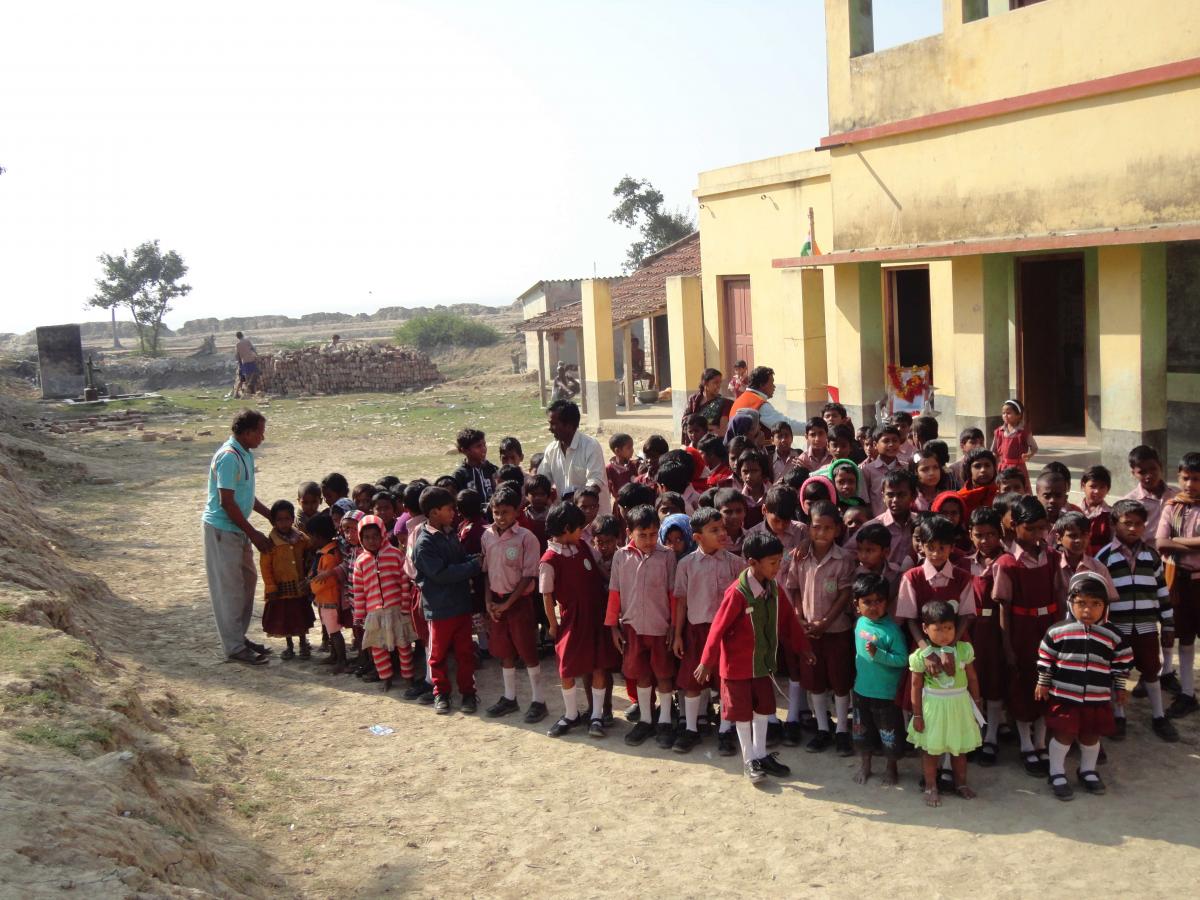
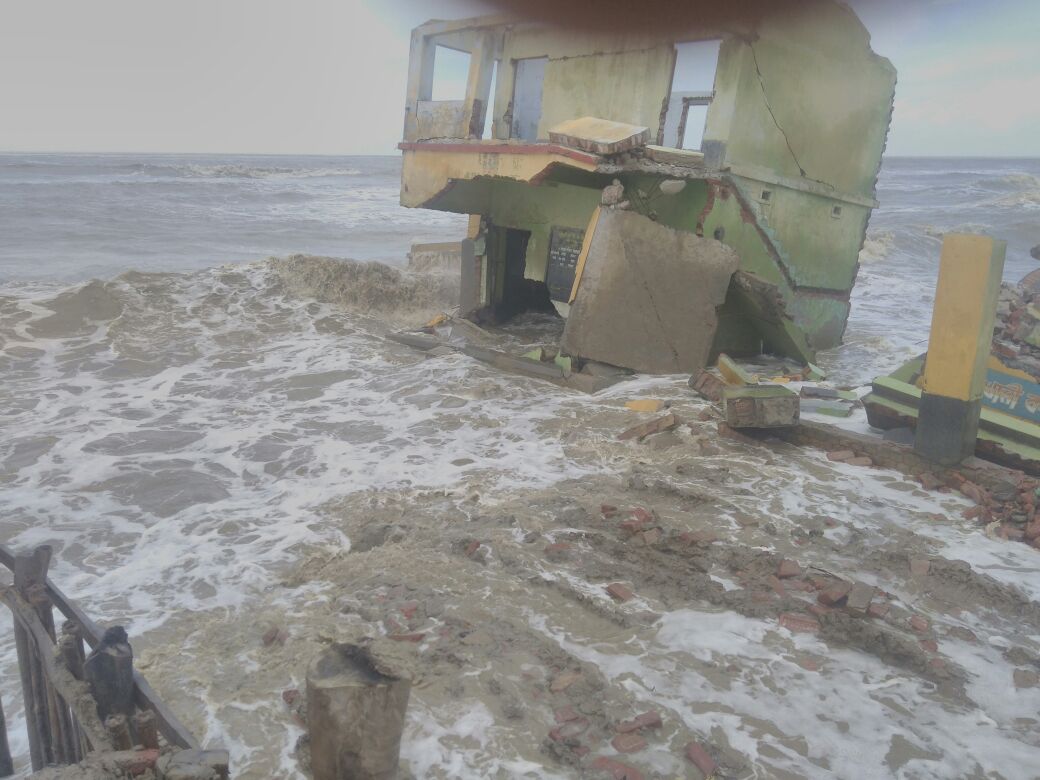
5. Cyclones
While the eastern seaboard of India has been more prone to cyclonic storms, the western coast has also witnessed an increasing number of cyclones, of greater intensity, in recent years. The Extremely Severe Cyclonic Storm Tauktae of May 2021 was the most powerful storm in recent history to advance along India’s west coast and it followed other strong storms that have occurred in the past few years. The climate assessment report found that the frequency of extremely severe cyclonic storms over the Arabian Sea had increased during the post-monsoon seasons between 1998 and 2018. This begs the question of whether global warming has exacerbated cyclone risk.
Low pressure systems routinely form over the ocean. They, however, develop into mature cyclones only when several meteorological conditions conspire favourably. This process is understood well enough that cyclones can be predicted up to a week in advance from meteorological observations. At the same time, it is too complex for making confident computations/assessments about how global warming may shape cyclones in the future in each ocean basin. Despite a tremendous improvement in cyclone forecasts, global warming is a new challenge that is now making them difficult.
Many of the recent cyclones like Ockhi, Fani, Amphan, and Tauktae intensified from a weak to severe status quite rapidly. When a cyclone intensifies by a wind speed of 55 km per hour in less than 24 hours, it is called rapid intensification. Warmer than usual ocean conditions are found to trigger rapid intensification of cyclones, but models are yet to successfully incorporate a tight coupling between ocean subsurface conditions and cyclones so that these events can be forecast.
Cyclones are thermodynamic ‘heat engines’ fuelled by water evaporating from the upper ocean and warmer oceans can enable cyclones of greater intensity.
On the other hand, there is a robust theoretical basis and observational evidence to show that cyclone intensities are strongly modulated by the temperature of the ocean up to a depth of about 100 m from the surface — the warmer the temperature, the more intense the cyclone. This is because cyclones are thermodynamic 'heat engines' fuelled by water evaporating from the upper ocean much as internal combustion engines are fuelled by heat generated from burning petrol or gas. Warmer oceans yield greater rates of evaporation from the surface, enabling cyclones of greater intensity.
Given projections of a persistently rapid rise in temperature of the Arabian Sea in the next few decades, it is anticipated that this basin will witness a continuing rise in cyclone frequency and intensity in the future.
Potential impacts
The rapid changes in India’s climate projected by climate models will place increasing stress on the country’s natural ecosystems, agricultural output, and freshwater resources, while also causing escalating damage to infrastructure. These portend serious consequences for the country’s biodiversity, food, water and energy security, and public health.
In the absence of rapid, informed, and far-reaching mitigation and adaptation measures, the effects of climate change are likely to pose profound challenges to sustaining the country’s rapid economic growth, and achieving the sustainable development goals (SDGs) adopted by UN member-states in 2015.
Increasing extreme rainfall events and droughts are both, ironically, detrimental to groundwater recharge.
Changes in the monsoon and its knock-on effects are perhaps the most important areas of concern for the country, dependent as it is on the monsoon for its fresh water and agriculture. Increasing extreme rainfall events and droughts are both, ironically, detrimental to groundwater recharge. Extreme rainfall tends to wash away fertile top soil as run-off instead of percolating into the groundwater.
Here, once again, we see our developmental choices exacerbating the impacts of climate disasters. A reduction in wetlands, the increasing concretisation of urban areas, and the sharp fall in forest cover over the last century have increased rates of soil erosion and compromised landscape and ecosystem integrity, making flash floods and landslides more likely with extreme rainfall. We have repeatedly witnessed the deadly consequences of such developments in recent years with events such as in Uttarakhand (2013, 2021) and Kerala (2018, 2019).
Studies also indicate that global warming will exact a direct toll on human health. Higher climate variability, warmer and more humid conditions, and extreme heat have all been linked to an elevated risk of heat strokes, cardiovascular and neurological conditions, and stress-related disorders. Warmer conditions and flooding are also more favourable for the spread of vector-borne diseases such as dengue fever and malaria. In addition, a decrease in the availability or affordability of food and potable water caused by climate change may lead to reduced nutritional intake, particularly among the economically weaker sections.
Unique, endemic wildlife in the subcontinent, especially those adapted to narrow environmental conditions, are under stress with the climate changing rapidly.
Infrastructure along the coastline — monuments, buildings, roads, railway lines, power plants — are vulnerable to increasing coastal erosion because of rising sea levels and cyclone damage. Unique, endemic wildlife in the subcontinent, especially those adapted to narrow environmental conditions, are under increasing stress with the climate changing more rapidly than at its usual pace that suits the evolutionary adaptability of these species.
Perhaps what is of greatest consequence is the rising threat of compounded impacts, where a cascade of climate change hazards overlap or follow one another, each exacting a toll on lives, livelihoods, health, and the economy. For instance, parts of the country may experience an abnormally long or intense summer heat wave followed by intense monsoon floods that alternate with lengthening dry spells. Coastal regions may experience prolonged floods due to storm surges, heavy rains, flooded rivers, and high tides that overlap with rising sea levels.
Action to mitigate carbon emissions
Climate change, together with biodiversity decline, has thrown up one of the most challenging existential questions in humanity’s history — a challenge that we face globally, yet to which we have contributed unequally. What are our options when faced with these crises?
A reduction in air pollution would benefit human and environmental health, improve the efficiency of solar energy generation, and aid in increasing the monsoon rainfall.
Just as climate change impacts may cascade and amplify, so may climate change solutions. For instance, a transition to renewables will reduce both GHG emissions and the water consumed to cool thermal power plants. Green building infrastructure can reduce both urban heating and air pollution. A reduction in air pollution would greatly benefit human and environmental health, improve the efficiency of solar energy generation, and aid in increasing the quantum of monsoon rainfall over India.
An increase in rainfall, together with measures for water harvesting, would aid the restoration of groundwater levels. Restoration of groundwater levels would not only improve water security and resilience to droughts but also help check land subsidence, consequently reducing the impacts of rises in sea level and storm surges. Improving early warning systems and forecasts would help address the new challenges presented by climate change.
In addition, sustained long-term measures such as education and awareness programmes, and stepping up climate research, including measures such as setting up observational stations to improve data gathering, collaborative knowledge generation, and sharing within and across countries, are among the many actions we can take to mitigate the risks posed by climate change. Besides, district-level vulnerability and risk assessments updated periodically in line with advancing research would also be beneficial. Most importantly, the principles of equity and justice — towards humans and nature alike — must be placed front and centre as we seek to protect the most vulnerable among us from the worst ravages of climate change.


